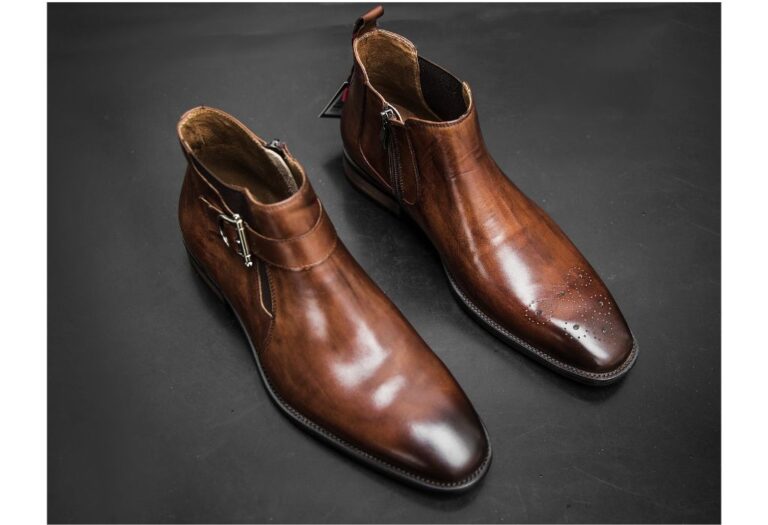Shoes: The Development Beyond Just Footwear 2025
Shoes are an essential part of our daily lives, serving both practical functions and acting as a means of self-expression. They provide comfort, support, and protection while reflecting individual style and societal trends. The evolution of shoes over time illustrates how culture, technology, and design have shaped the footwear industry into what we know today.

A Brief History of Shoes
Shoes have been around for thousands of years. The earliest examples were simple sandals made from materials like leather, plant fibers, and animal hides, designed to protect the feet from rough terrain and harsh weather conditions. The oldest known shoes, discovered in a cave in Armenia, are over 5,500 years old and were made from plant fibers.
As civilizations developed, so did the design of shoes. The Greeks and Romans are famous for their elaborate leather footwear, such as the “caligae” worn by Roman soldiers. Meanwhile, the ancient Egyptians wore sandals made of leather or woven papyrus. These early shoe designs prioritized comfort, durability, and practicality.

In the Middle Ages, shoes began to reflect social status. Pointed toes, or “poulaines,” became fashionable, and while peasants wore simpler footwear, the wealthy often donned shoes made from luxurious fabrics like velvet and silk. By the 16th century, shoes were crafted to balance both fashion and function. High heels, originating in Persia, became popular in Europe, especially among the aristocracy. Today, the red soles of Christian Louboutin shoes continue this legacy of stylish, high-end footwear.
The Modern Shoe Market
In modern times, shoes have evolved from mere necessities into symbols of personal style, performance, and even technology. The footwear market is vast, offering everything from designer heels to running shoes engineered for top performance.
Athletic shoes have undergone a dramatic transformation. Innovations such as memory foam insoles, lightweight mesh fabrics, and specialized rubber soles have enhanced comfort and support. Leading brands like Nike, Adidas, and Puma invest heavily in research and development to create shoes that are not only functional but stylish. Today’s athletic footwear is highly specialized, with shoes designed for specific sports and activities to improve performance and reduce injury.
Sneakers, once primarily practical, have become a major cultural and fashion symbol. Brands like Nike, Converse, and Vans have turned sneakers into a form of self-expression through limited-edition releases and collaborations with designers, artists, and celebrities. The sneaker culture has grown exponentially, with rare or vintage pairs fetching thousands of dollars, solidifying the sneaker’s place as a global fashion icon.

Sustainability and Innovation
Sustainability has become a crucial focus in the footwear industry, as brands and consumers aim to reduce their environmental impact. Many companies are adopting eco-friendly materials such as recycled fabrics, plant-based leathers, and shoes designed for recycling. Adidas, for example, has introduced shoes made from ocean plastic, while Allbirds is known for its sustainable wool sneakers. These innovations are helping pave the way for a more sustainable future in footwear.
Alongside sustainability, technology continues to shape the future of shoes. Advancements such as self-lacing sneakers, inspired by the iconic “Back to the Future” design from Nike, and shoes with sensors that track foot movement are on the horizon. 3D printing is also being used to create customized shoes with unique fits, offering a more personalized approach to footwear that could revolutionize how shoes are designed and bought.
Shoes as Fashion Statements
Today, shoes are more than just functional; they have become powerful fashion statements. Celebrities, influencers, and designers have elevated shoes to an art form. Brands like Louboutin, Manolo Blahnik, and Jimmy Choo have redefined footwear as luxury accessories, while platforms, stilettos, and boots are now common in mainstream fashion.
People use shoes to express their individuality, whether through bold colors, intricate designs, or unconventional materials. Sneakers, once seen as casual wear, are now embraced for their versatility and creativity. Retro and vintage styles, such as 1990s chunky sneakers or classic Converse Chuck Taylors, are making a strong comeback, blending nostalgic influences with contemporary fashion.
Conclusion
Over the centuries, shoes have evolved from simple protective coverings to multifaceted fashion statements and technological innovations. They now reflect cultural trends, individual style, and advancements in design. As the footwear industry continues to innovate, Shoes will remain a vital part of our lives, combining fashion, comfort, and functionality in ways we have yet to fully imagine. Whether for sport, sustainability, or style, shoes will continue to play a significant role in how we walk through the world.


